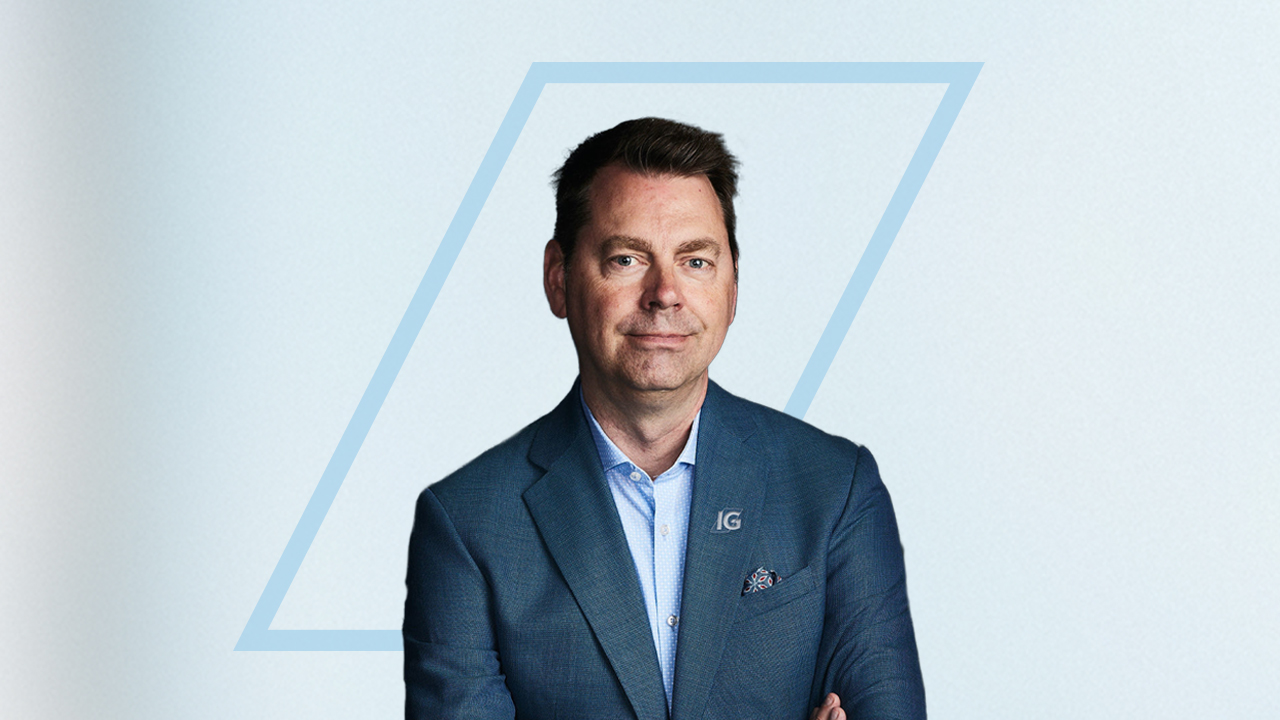However, it makes more sense to look at what budgeting can do for you, rather than the work you need to put in to make one. Budgeting can reduce your financial stress enormously. It helps you to have more financial stability, to keep your spending in check and to reduce your debts.
Let’s take a closer look at why budgeting is so important, how to set up a monthly budget and tips for maintaining a successful budget.
Why budgeting is so important
Having a monthly budget is crucial if you’re ever going to reach a high level of financial stability. Without a monthly budget, you’ll never know how much money you’ve got coming in or what you spend it all on. Also, without a budget, the chances of spending more than you earn and getting into debt are far higher, while saving money can be impossible.
If any of these situations sounds familiar to you, making a budget could be really helpful:
- You feel like you’ve got no control over your finances.
- You’re struggling to save for a major event or purchase.
- You have no idea where all your money goes.
- Your debts keep growing.
- You’re not saving enough for retirement.
Let’s explore the key ways that budgeting can greatly improve your financial well-being and ultimately help you to reach your financial goals faster.
Reducing debt
Debt repayment is a key goal of a budget plan. If you have high-interest debt (such as credit card debt or non-secured loans/lines of credit) you could easily find yourself paying thousands of dollars a year in interest alone. You could also find that it could take years to pay that debt off.
Having large amounts of high-interest debt can make reaching any financial goals a much harder task. Also, debt can too quickly spiral out of control and can sometimes lead to you needing to either declare bankruptcy or take on a consumer proposal. Both of these can make it extremely difficult to access affordable credit in the future (including getting a mortgage or auto financing).
A monthly budget can help you to allocate a certain amount of money to help pay off your debt in a reasonable time frame. You could also use strategies such as debt consolidation to reduce your debts faster. This is where you pay off all of your high-interest debts with one low-interest loan (ideally a loan secured against your home, such as a home equity line of credit).
This not only becomes easier to manage (you have one monthly payment instead of several) but it can also greatly reduce the amount of interest paid as well as your monthly outgoings, so that you have more money available for paying bills on time and saving.
Taking control of your spending
One major advantage of creating a monthly budget is that you get to have a much better understanding of how you spend your money. When you first look at how to start budgeting, you’ll need to work out how you spend every single dollar.
You’ll need to break this down into regular essential expenses, ad hoc expenses and discretionary spending (the fun stuff). Once you have this breakdown, you may be surprised (or shocked) by how much you spend on non-essentials, such as coffee or takeout meals.
In this instance knowledge truly is power. If you’re spending $80 per month on your daily coffee, you could easily free up most of that money by taking a coffee with you to work or getting your coffee from the office kitchen.
Also, once you start budgeting, it’s much easier to set and keep to spending limits. When every dollar is accounted for, it’s far more difficult to overspend. Each month you’ll know exactly how much you can spend, so that reaching your financial goals becomes much simpler.
Saving more
Before you start budgeting, your spending can typically happen in a haphazard way. You could find yourself spending money on a whim or in an ad hoc fashion, and before you know it, your paycheque has already gone.
With a budgeting plan, saving money becomes a priority, before you make any discretionary spending. Once you know how to budget money, you pay your bills and other expenses first, then you put aside money for saving. What’s left over is what you have left for discretionary spending.
Saving money is a huge step towards having less financial stress. Savings can help in all manner of ways, including helping you to:
- Stay out of debt.
- Make large purchases.
- Have a more comfortable retirement.
After a few years of successful budgeting, you should start to have your debts under control and a good amount of savings, which all add up to a far greater feeling of financial well-being.
Being able to cope with emergencies
Many people end up going into debt because of an unforeseen emergency that can cost them a considerable amount of money that they simply don’t have at hand. Emergencies are the enemy of any financial plan if you don’t have a way of dealing with them.
Part of any budgeting plan includes growing an emergency savings fund. The idea is that you put a certain amount away each month until your emergency fund has grown to a certain level (some people choose enough to cover three months of expenses or more as a target amount). You can then draw from this fund if an unexpected expense arises, enabling you to stay out of debt.
If you do draw from the fund, you would then make additional contributions to it until it reaches its target amount again. Being able to build an emergency fund is undoubtedly one of the main benefits of having a budgeting plan. Without an emergency fund, even the best financial plans can be easily derailed.
How to start budgeting
When you first start out budgeting, it can be really helpful to take it in stages.
- Work out your exact post-tax income: most budgets work as monthly plans, so you’ll need to calculate how much take-home pay you’ll receive every month. This is the starting point for your budget plan.
- Calculate your monthly fixed expenses: these could include your mortgage or rent payments, auto payments, fixed loan payments, charitable donations and anything else that you regularly need to pay, which is the same amount each month.
- Calculate your variable expenses: these could include groceries, clothing, utilities (which often fluctuate over the year), gas, car repairs, credit card payments, etc. You’ll then need to work out how much each expense comes to on average per month (to do this, add up the total amount of each expense over the year and divide by 12).
- Finally, add up all of your discretionary spending. This will include takeout and restaurant meals, sports events, theatre and concert tickets, and anything that you wouldn’t consider “essential” (all the fun stuff, basically). Then divide it all by 12 to get your monthly discretionary spending amount.
This next part is crucial: take your monthly income amount and subtract all three types of expenses. That figure is what you will now work on. If it’s a small amount, you need to work on increasing it (remember, you need to add savings to the equation).
If the amount is a negative, it means you’re spending more that you earn, which is a big problem. Regardless of the figure, this is your opportunity to cut back on spending and increase the amount you put towards savings or bringing down debt.
How to budget for the short term
If the first stage of setting up a budget plan revealed some concerns (such as high debt payments or little money left over after paying expenses) your short-term budgeting needs to address them.
Because the next stage of starting a budget plan is to work out what your short-term and long-term goals are. Ideally, your short-term goals should include one or more of these:
- Bring high-interest debt down to zero.
- Reduce discretionary spending.
- Free up more money for saving.
- Start building an emergency fund.
Let’s take these one at a time.
Ways to reduce your debts faster: There are a few strategies for lowering your high-interest debt. We already mentioned taking out a HELOC, which, for homeowners, can be the most effective strategy. It allows you to pay off all of your high-interest debt using equity from your home.
Because HELOC interest rates are significantly lower than high-interest debt (they can be as low as a quarter of the amount of high-interest credit card debt), you’ll usually be able to reduce your payments drastically. This will free up a significant amount of monthly money which can go towards paying off the HELOC debt. This will help you pay off your debts much faster than if you’d kept with your high-interest accounts.
A similar strategy is to refinance your home so that your high-interest debt gets added to your mortgage. This usually gets you the lowest interest rate available for any kind of debt, and it can reduce your debt payments by a huge amount, freeing up even more money for saving (the debt is repaid over the lifetime of your mortgage — the amortization period — making the repayment amounts typically very affordable).
Reduce discretionary spending: A crucial step in successful short-term budgeting is to lower your spending on non-essential expenses. You would need to cast a critical eye over your discretionary spending and work out which expenses can be reduced or eliminated all together.
Here are some quick ways to reduce your spending:
- Cancel any subscriptions that you rarely or never use (such as a streaming service, gym membership or news services).
- Reduce your take-out and dining out meals.
- Go to see just one game a month (or watch them on TV instead).
- Watch movies online instead of at the movie theatre.
- Take lunches to work (either leftovers or sandwiches/salads).
Free up more money for saving: The strategies above will all help to drastically reduce your non-essential spending. The saved money can go towards balancing your budget (if there is a deficit), paying off debts faster and saving more.
Another strategy for saving more is to structure your budget like so: essential expenses (for example, your mortgage, utilities, bills and debt payments), followed by savings and then discretionary spending. You don’t have to completely forgo the fun stuff, just make sure saving is a higher priority.
Start building an emergency fund: depending on your financial goals, you may have several reasons for saving: for a wedding, a new car, a new home or retirement. As well as factoring in your key savings goals, you also need to contribute to your emergency fund every month.
We can’t overstress the importance of an emergency fund. Without one, the first emergency that comes along can completely derail your budget and your financial plan.
The 50 30 20 budget rule and other budgeting methods
Now that you’ve got a clearer picture of your income and essential expenses, as well as ways to reduce debt faster and spend less, it’s now time to decide on a budgeting method.
A popular budgeting method is the 50 30 20 rule. It’s a pretty simple strategy that many people swear by. Basically, you allocate all of your monthly income into three categories:
Essential needs take up 50%: these are the expenses that can’t be ignored or avoided. Housing costs (mortgage payments, rent, city taxes, utilities, repairs, etc.), travel expenses (including auto payments, maintenance and insurance, gas, travel cards, etc.), clothing and footwear, and groceries are some examples of what need to be covered by this 50%.
Non-essentials account for 30%: these include going out and entertainment, plus that stylish outfit or those awesome shoes that you don’t technically need but really, really want.
Savings make up 20%: this will include money going towards your emergency fund, retirement, a future down payment and any other savings goal.
The 50 30 20 budget rule doesn’t have to be absolutely hard and fast: in the early months of budgeting, you may find that some of these categories need more than their allocation. For example, if you’re focused on paying down high-interest debt, your essentials could be as high as 70%, at least until this debt is paid off or managed better.
Similarly, your non-essentials budget could come in below 30% of your total income, until your debts are paid off and/or your emergency fund is built up to a sufficient level.
If the 50 30 20 budget rule is too rigid for your liking, the zero-based budgeting method may be a better budgeting method (also known as accounting for every dollar). You break up your spending into several categories and allocate a dollar amount to each one, until every cent of your income is accounted for. It’s also a more flexible way of budgeting; if one category requires less money (for example, once you’re paid down your debt or built up your emergency fund) those funds can go towards other saving categories.
The tools for creating a monthly budget plan
There are several tools you could adopt to set up and monitor your budgeting plan. The best tool for you will depend on how comfortable you are with math or technology.
You could keep it simple and use a pencil and paper, drawing up your spending categories and updating them as the month progresses. Alternatively, you could use a digital spreadsheet, such as Excel, to help you set up and monitor your budgeting (Excel will do all the math for you).
If you’re comfortable with tech, there’s a range of budgeting apps available that get good reviews from users. Once you’ve input your details (and some budgeting apps allow you to link your bank account and credit cards so they can monitor your spending more accurately) the apps do all the heavy lifting for you.
Some also allow you to input your savings goals, track your bill payments and even provide fraud protection alerts. Most of these apps offer a free trial, some offer a free version (with fewer features), otherwise they come with a fairly low monthly subscription.
How to budget for the long term
When you first start your monthly budget plan, your goals will likely change considerably over the first 12-24 months. If you’ve started budgeting to reduce your spending, lower your debt, take back control of your finances or all of the above, your short-term budgeting goals will be pretty straightforward.
You’ll want a plan to bring your high-interest debt to zero, cut back on spending and begin growing your savings (especially your emergency fund).
Once those goals are achieved, you can look into your long-term goals. You’ll be able to start planning for the future, building your retirement savings and making sure you can pay for most big-ticket items without having to go into debt. Read more about building a robust retirement savings plan.
Tips for successful budgeting
Be realistic: this is the most important strategy for ensuring that your monthly budget isn’t quickly derailed. If you allocate close to 100% of your income on bills and savings, you’ll quickly get tired of having little enjoyment in your life. Allow yourself some fun time while reining in your spending.
Be flexible: as we’ve seen, your budgeting is likely to be very different over the short term than the long term. Also, you may come across ad hoc expenses that you hadn’t budgeted for, in which case you’ll need to modify your budget somewhat. Budgeting isn’t an exact science and flexibility is a key element for its success.
Monitor your budget closely (especially in the early months): make sure that you’re keeping your spending under control and that you’re consistently sticking to your savings commitments. If you find that you often miss any budgeting goal, revisit your monthly budget plan and make it more realistic.
Be accountable: if you’re part of a couple, be accountable to each other. If you live alone, ask either a parent, sibling or friend to help you stay on track, by giving them regular updates on your progress. Most people don’t like to disappoint others, so having someone to answer to — even if it’s just yourself — can help you to keep your budgeting plan on track.
How an IG Advisor can help you with successful budgeting
Part of an IG Advisor’s job is to help clients optimize their income, improve their financial confidence and reach their savings goals. There are some key ways that an IG Advisor can help you with effective budgeting:
- Help you establish a realistic budget you can stick to.
- Work with you to build an emergency fund.
- Provide strategies for reducing debt.
- Help you allocate surplus cash to meet various goals.
- Suggest various tailored strategies to optimize your cash flow.
Your IG Advisor will also help put together your Living Plan, a financial plan that takes into account every aspect of financial life, including money management, retirement planning, protecting yourself and your loves ones, mortgage strategies, investments and saving for big-ticket items. And all of this is done in the most tax-efficient way possible.
Talk to your IG Advisor today to get started on budgeting and getting more control over your finances. If you don’t have an IG Advisor, you can find one here.
Written and published by IG Wealth Management as a general source of information only. Not intended as a solicitation to buy or sell specific investments, or to provide tax, legal or investment advice. Seek advice on your specific circumstances from an IG Wealth Management Consultant
Insurance products and services distributed through I.G. Insurance Services Inc. (in Québec, a Financial Services Firm). Insurance license sponsored by The Canada Life Assurance Company (outside of Québec).








